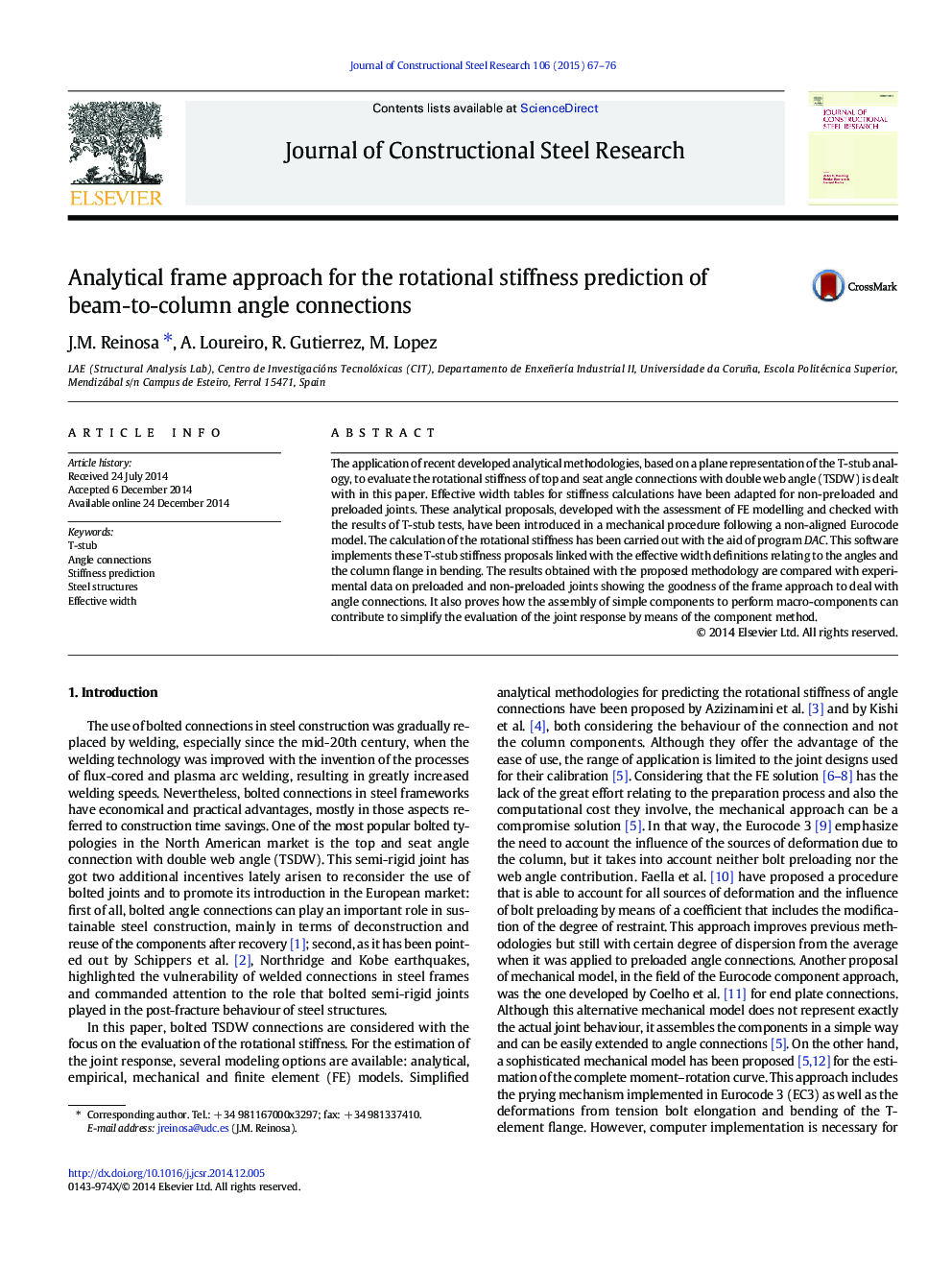| Article ID | Journal | Published Year | Pages | File Type |
|---|---|---|---|---|
| 284489 | Journal of Constructional Steel Research | 2015 | 10 Pages |
•The rotational stiffness prediction of angle connections has been dealt with.•Effective width tables for stiffness calculations have been developed.•T-stub analytical approaches have been introduced in a mechanical model.•The mechanical model has been implemented in program DAC.•The model has been successfully checked with preloaded and non-preloaded tests.
The application of recent developed analytical methodologies, based on a plane representation of the T-stub analogy, to evaluate the rotational stiffness of top and seat angle connections with double web angle (TSDW) is dealt with in this paper. Effective width tables for stiffness calculations have been adapted for non-preloaded and preloaded joints. These analytical proposals, developed with the assessment of FE modelling and checked with the results of T-stub tests, have been introduced in a mechanical procedure following a non-aligned Eurocode model. The calculation of the rotational stiffness has been carried out with the aid of program DAC. This software implements these T-stub stiffness proposals linked with the effective width definitions relating to the angles and the column flange in bending. The results obtained with the proposed methodology are compared with experimental data on preloaded and non-preloaded joints showing the goodness of the frame approach to deal with angle connections. It also proves how the assembly of simple components to perform macro-components can contribute to simplify the evaluation of the joint response by means of the component method.
